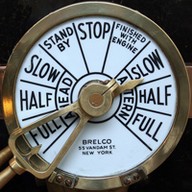Os Navios2 - Família Mendola - Da Sicilia para o Brasil! Embarque conosco nesta viagem...
Menu principal
- Bem-Vindos
- Homenagem aos Imigrantes
-
Raízes
- Ascendências
- Nossas Origens
-
Sobrenomes
- Espanhóis
- Italianos
- Escudos
- A Imigração
-
Nossos Antepassados Imigrantes
- Famílias Espanholas
- Famílias Italianas
- Os Nomes
-
Álbum de Família
- Famílias Espanholas
- Famílias Italianas
- Contando Causos
- Dicas Para Suas Pesquisas
- Fontes de Pesquisa
- Pendências
- Separator 1
- O Autor
- Blog
- Contato
Os Navios2
Os Navios
 Durante o grande fluxo imigratório, milhares de famílias italianas e espanholas deixaram para trás suas casas, suas cidades e suas pátrias. Viajaram em trens, carroças e até mesmo a pé, carregando todos os seus pertences (percorriam grandes distâncias até os portos para embarque). Com relação aos nossos antepassados, os mesmos embarcaram nos portos italianos de Genova, Napoli e Palermo e no porto espanhol de Málaga. Com poucas informações sobre o Brasil, os imigrantes precaviam-
Durante o grande fluxo imigratório, milhares de famílias italianas e espanholas deixaram para trás suas casas, suas cidades e suas pátrias. Viajaram em trens, carroças e até mesmo a pé, carregando todos os seus pertences (percorriam grandes distâncias até os portos para embarque). Com relação aos nossos antepassados, os mesmos embarcaram nos portos italianos de Genova, Napoli e Palermo e no porto espanhol de Málaga. Com poucas informações sobre o Brasil, os imigrantes precaviam-
|
Os recursos para as passagens algumas vezes eram próprios, mas na maioria das vezes eram subsidiados pelo Governo da Província de São Paulo. Eram embarcados na terceira classe dos navios, geralmente localizada nos porões dos mesmos e com lotação acima da capacidade. No final do século XIX as viagens já eram feitas em navios a vapor, conhecidos como vapores, mais rápidos que os navios a vela, porém com péssimas instalações, pois geralmente eram navios de carga adaptados para o transporte de passageiros. A travessia do Oceano Atlântico era realizada entre 21 e 30 dias.
Nesta página você encontrará uma breve descrição sobre a história dos navios a vapor nos quais nossos antepassados italianos e espanhóis efetuaram a travessia do Oceano Atlântico rumo ao até então desconhecido Brasil, em busca de uma condição de vida melhor para si e seus familiares. Em alguns resumos, foram transcritos os textos originais em inglês, para preservar a originalidade dos mesmos. Família Mendola
Família Mendola
História do Navio a Vapor Rosario
O navio Rosario pesava 1957 toneladas e media 85,95 m por 10,73 m. Foi construído por Wigham Richardson & Co em Walker- Famílias Ravagnani e Bariani
Famílias Ravagnani e Bariani
História do Navio a Vapor Poitou
The Poitou of 1867 belonged to the French SGTM Line, Société Genérale de Transports Maritimes. She was 2303 gross tons, 99.00 m long x 10.6 m beam which is 324.8 ft x 34.8 ft. She had one funnel, 2 masts, iron construction, single propeller, 2 inverted engines giving a speed of 10 knots. She was built by Malcolmson Brothers in Waterford, Ireland, launched in 1867. October 1867 maiden voyage Marseille - Famílias Cremon, Degliuomini e Bertassello
Famílias Cremon, Degliuomini e Bertassello
História do Navio a Vapor Florida (Cavour)
Built by Societa Esercizio Bacini, Rive Trigoso, Italy for Lloyd Italiano of Genoa, this was a 5018 gross tons, length 381.4 ft x beam 48.1 ft, two funnels, two masts, twin screw and speed of 14 knots. There was passenger accommodation for 25 ( 1st class) and 1600 (3rd class). Launched in June 22nd, 1905, she started her maiden voyage on September 18th, 1905 when she left Genoa for Naples and Buenos Aires. After this voyage she commenced Genoa - Famílias Della Colletta e Gava
Famílias Della Colletta e Gava
História do Navio a Vapor Mentmore (Assiduità)
This was a 3296 gross tons, length 339.6 ft x beam 40.2 ft (103.50 m x 12.25 m), one funnel, two masts, iron hull, single screw, speed 10 knots. Accommodation for 1200 (3rd class) passengers. Built by J. Key & Sons, Kinghorn, she was launched on February 19th, 1882 as the Mentmore for the Johnston Line. In 1896 she was purchased by the Zino Line of Italy, renamed "Assiduità" and started her first Genoa - Famílias Minatel e Arnosti
Famílias Minatel e Arnosti
História do Navio a Vapor Teutonia (Regina)
The "Teutonia" was built by Caird & Co, Greenock for the Hamburg- Famílias Fernandez e Gordillo
Famílias Fernandez e Gordillo
História do Navio a Vapor Dunrobin Castle (Notre Dame de Salut)
Was built in 1875 by Robert Napier & Sons at Glasgow with a tonnage of 2811 grt, a length of 342 ft 4 in, a beam of 38 ft 4 in and a service speed of 10 knots. She was the first genuine mail steamer for Donald Currie's South African service and, on her maiden voyage, broke the Cape record by 12 hours. In 1876 she was transferred to the Castle Mail Steam Packets Co. Ltd. On January 27th, 1879 she brought the first news to Britain about the Zulu victory at Isandlwana, 110 miles northwest of Durban on the Buffalo River, when 18000 Zulus surprised four companies of the 24th Foot Regiment and virtually annihilated them when they killed some 800 men. Led by Cetshwayo the Zulus lost 2000 warriors. In 1883 she was transferred to the Intermediate service and on June 6th, 1892 was the first ocean-
